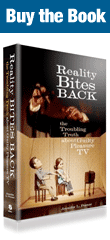| Oct 12 |
ColorLines on race and reality TV: from cultural transgression to minstrel showsToday at ColorLines Magazine, Neelanjana Banerjee looks at race, representation and reality TV and asks, as per the story’s headline: “Is Reality TV a Revolution for Race or the New Minstrel?” A smart, nuanced and well-reported piece, Banerjee notes that:
The NAACP could arrive at such a conclusion because, as Banerjee writes, “Today, the mainstream dating shows, such as ‘The Bachelor,’ primarily ignore people of color. But on competition shows and on cable networks, characters of color are much more likely to show up.” Which is to say, people of color are more likely to appear in network competition shows and cable reality TV dating and lifestyle shows than they are across the board in scripted television. It is for just this reason that we need to pay critical attention to not just the quantity of people of color within the reality TV universe, but to the quality of those representations, as I discussed with the magazine:
I delve into those visible — and sometimes not so visible — biases in Reality Bites Back, in the chapter, “Erasing Ethnicity, Encoding Bigotry: Race, pre-and post- Flavor of Love“:
Still, there are always exceptions. And I do explore some of the positive glimmers in the book–which, I’m happy to say, ColorLines picked up on and expanded. Among the thousands of reality TV cast members who’ve gotten drunk, hooked up and stripped down on lifestyle, dating and modeling shows over the years, Banerjee rightly states that “a few of those faces… have also been catalysts for some of television’s most transgressive moments,” including HIV-positive Pedro Zamora on MTV’s The Real World in the 1990s (which happened before the book’s 2000 – 2010 focus), or transgender model Isis King on cycle 11 of The CW’s America’s Next Top Model. As per ColorLines:
(Why that quip? Because as I write in the book, Isis’s participation on Top Model was marked by mixed messages–and “acceptance had its limits.” Here’s the back story about the “doesn’t have an agenda” comment: One of the judges specifically praised her for answering a question about what her presence there would do for the LGBT community by saying she only wanted to win, only wanting to be a model, not an activist.”) I wrote Reality Bites Back to spark a critical, cultural debate about the role reality TV plays in shaping our ideas about gender, race, class, and more, from the minstrel shows of VH1 to the rare exceptions in which images of individuals such as Pedro and Isis humanize previously “othered” groups. I’m so pleased that Banerjee sought insights from hip hop journalist Davey D, Phil Yu of Angry Asian Man, Center for Media Justice’s Malkia Cyril, and Kristal Brent Zook at The Root for this piece about the positives and negatives of race in reality television. What do you think about race and reality TV? Let the debate continue — share your comments and questions below. (And go read the full piece at ColorLines.)
Permalink Leave a Reply |






